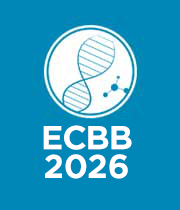Title: Improvement of saffron Crocus sativus L. by plant biotechnology
Abstract:
Saffron is a spice constituted by the dried stigmas of the flower of Crocus sativus L. This iridacea is a corm plant undemanding at the edaphic level and which supports harsh winters (up to -10 °C) and hot summers (over 40 °C) with a biological cycle where its corms are at state of dormancy in the soil half the year. Saffron is considered as “red gold” and is among the world’s most expensive and valuable spices by weight. It is credited with color, flavor, and fragrance due to more than 150 volatile and aroma-yielding compounds. The exorbitant price of saffron of up to $30/g frequently exposes the saffron to fraud and requires the use of effective controlling methods to guarantee its authentication.
World saffron production amounts to some 400 tonnes/year. The main producing countries are: Iran (94%), Greece (2.2%), Morocco (1.5%), India (1%), Spain (0.5%) and other countries (0.7%). Morocco is the largest African producer of saffron that constitutes a flagship local product and which strongly contributes to the income of local people.
If aspects related to saffron, such as the structuring of producers, the cultural management, the packaging, and the marketing have marked a significant progression, the in-depth knowledge of the biology of the plant, the chemical component of its spice, and the Molecular identity of accessions represent a continuous challenge to scientific research and plant biotechnologies are currently being used intensively in order to improve the production of saffron and protect its authenticity.
The conference will focus on the contributions of scientific research to saffron starting with the agro-morpho-physiological aspects of C. sativus different accessions by the study and comparison of various parameters related to the underground part and the aerial part in order to achieve a clonal selection. The chemical part will focus on the main metabolites of saffron (crocins, picrocrocins and safranal) in the context of the ISO standard. The chemical study of saffron is able to evaluate the content of its three main metabolites, to control the authenticity and to distinguish different geographical origins of this spice using UV-Vis, HPLC, GC, IR and colorimetric techniques.
The molecular aspect will deal with the use of molecular markers such as microsatellites (SSR), inter-microsatellites (ISSR) and barcoding to characterize different accessions of saffron, assigning their molecular identities able to counter fraud attempts linked to the high cost of this spice. The application of plant biotechnologies to saffron, such as plant tissue culture is undertaken with the aim of accelerating seed production of elite accessions and producing the secondary metabolites of this plant. Finally, the research conducted on the recovery of saffron flower waste will be described in the context of production of bio-dyes.



